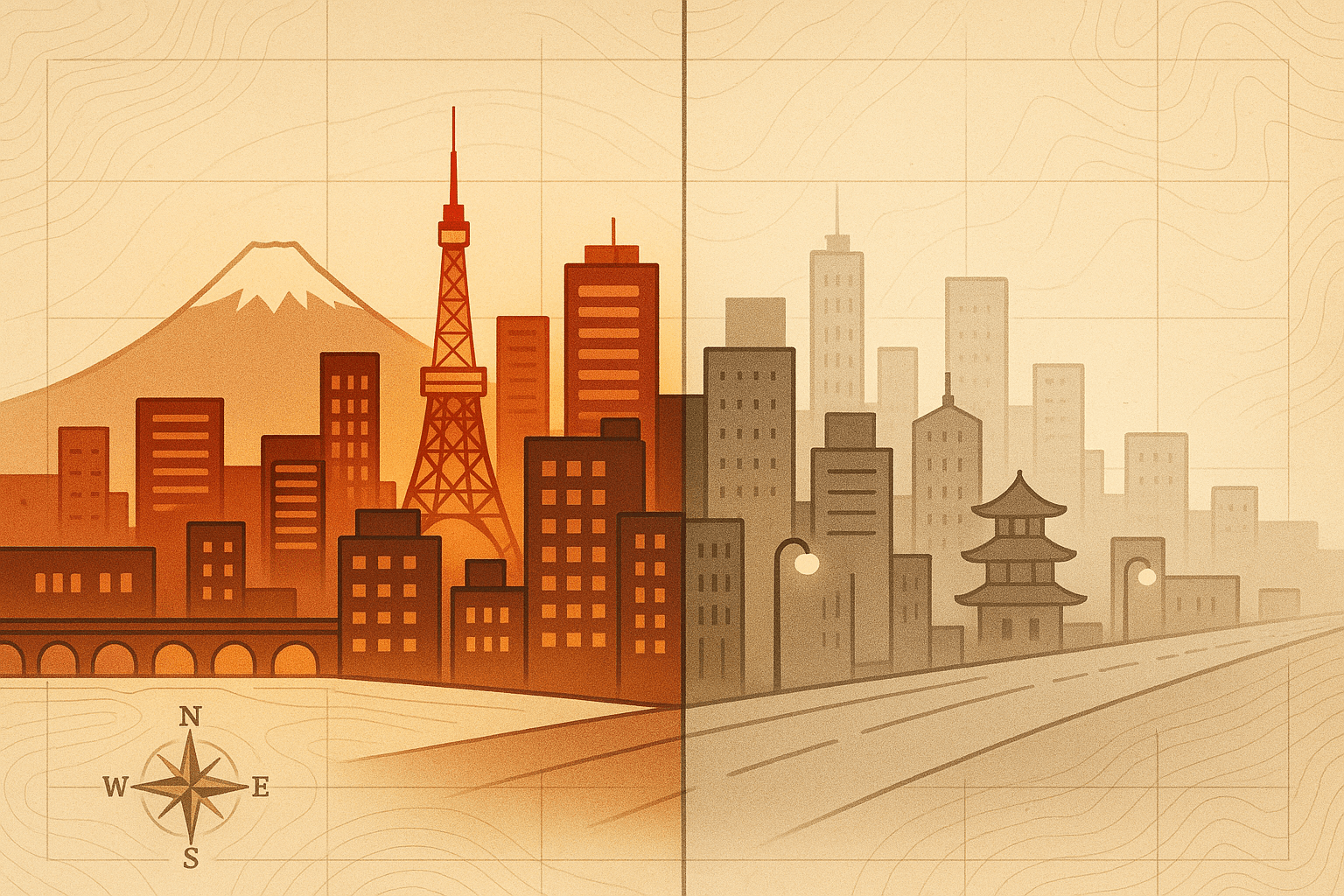When we picture the geography of Japan, our minds often jump to the dazzling, neon-drenched cityscape of Tokyo or the serene, temple-dotted hills of Kyoto. These are images of density, energy, and growth. Yet, a quieter, more profound geographical transformation is underway across the archipelago: Japan is shrinking. This isn’t just a headline about birth rates; it’s a fundamental reshaping of the country’s human and physical landscape, a process that is turning planners into pioneers as they navigate the unprecedented challenge of managed decline.
The Topography of an Emptying Nation
To understand why certain areas are emptying out, we first need to look at Japan’s physical geography. Roughly 75% of the country is mountainous, leaving a relatively small percentage of land—primarily coastal plains—for its 125 million people to live and farm on. This has always created a natural population funnel, concentrating people into dense urban corridors.
This physical reality was amplified by a powerful force of human geography: the post-war economic miracle. From the 1950s onwards, a massive wave of internal migration saw millions leave their rural hometowns for the economic opportunities of the “big three” metropolitan areas: Tokyo, Osaka, and Nagoya. This created a demographic imbalance that persists today. The countryside was left with an aging population, while the cities boomed. Now, with the nation’s birth rate at a historic low and its population in absolute decline, these rural and regional areas have no younger generation to replace those who are passing away. The result is a hollowing out of the Japanese heartland.
Akiya: The Ghostly Footprint of Depopulation
The most visible scar of this demographic shift is the proliferation of akiya (空き家), or abandoned homes. They are the ghostly footprints of families that have moved away or died out. According to the latest government survey, there are nearly 9 million vacant dwellings in Japan, a number that is projected to grow exponentially. These are not just remote farmhouses crumbling back into nature; they are increasingly found in the quiet, sprawling suburbs of regional cities, once the very picture of middle-class prosperity.
An akiya is more than just an empty building. It’s a geographical problem with cascading consequences:
- Safety Hazards: Unmaintained properties are at risk of collapse, especially during Japan’s frequent earthquakes and typhoons. They also become fire hazards and can attract pests or crime.
- Economic Drag: A street dotted with empty homes depresses property values for the entire neighborhood, making it difficult for remaining residents to sell. It also erodes the local tax base, straining municipal budgets.
- Social Decay: The visual blight of abandoned buildings weakens community ties and signals a sense of managed neglect, discouraging new investment or residents.
In response, local governments have created “akiya banks”—online databases listing vacant properties for sale, often at bargain prices. Some towns have even offered homes for free or provided generous subsidies for renovations, desperate to attract new blood. However, these initiatives are often a small bandage on a much larger wound.
A Blueprint for Shrinkage: The “Compact City”
If you can’t stop the shrinking, how do you manage it? This is the question driving one of Japan’s most ambitious urban planning experiments: the “Compact City” (コンパクトシティ) model. Instead of trying to maintain services across vast, emptying suburbs, the strategy is to actively plan for a smaller footprint.
The goal is to consolidate. Municipalities designate a central core and key transport corridors as “urban function inducement zones.” They then use a combination of incentives and disincentives to encourage residents, businesses, hospitals, and shops to relocate from the sparsely populated periphery into these denser, more efficient areas. The aim is to create a vibrant, walkable city center where essential services are easily accessible, especially for the elderly.
The textbook example is Toyama City, located on the coast of the Sea of Japan. Facing a sprawling layout and a shrinking, aging population, the city invested heavily in its light-rail transit (LRT) system. It then offered subsidies of up to ¥500,000 (around $3,500 USD) to residents who built or bought a home near an LRT station. By concentrating its population along these transit arteries, Toyama has managed to reduce infrastructure costs, boost public transport usage, and revitalize its downtown core. It has proactively redesigned its geography to fit its new demographic reality.
Japan as a Laboratory for the Future
The journey is far from over. The compact city model raises difficult questions about social equity—what happens to the elderly residents who cannot or will not move from the periphery? How does a nation preserve the cultural heritage of thousands of villages that may cease to exist? There is no single, easy answer.
What is clear is that Japan is on the frontline of a global trend. Countries across Europe and other parts of Asia are beginning to face the same demographic headwinds. The strategies being tested in the mountains of Kyushu and the coastal plains of Honshu—from managing akiya to building compact cities—are not just domestic policies. They are potential blueprints for how developed nations can gracefully adapt to a future with fewer people. Japan is providing the world with a live-action lesson in the geography of decline, and more importantly, in the art of planning for it.
